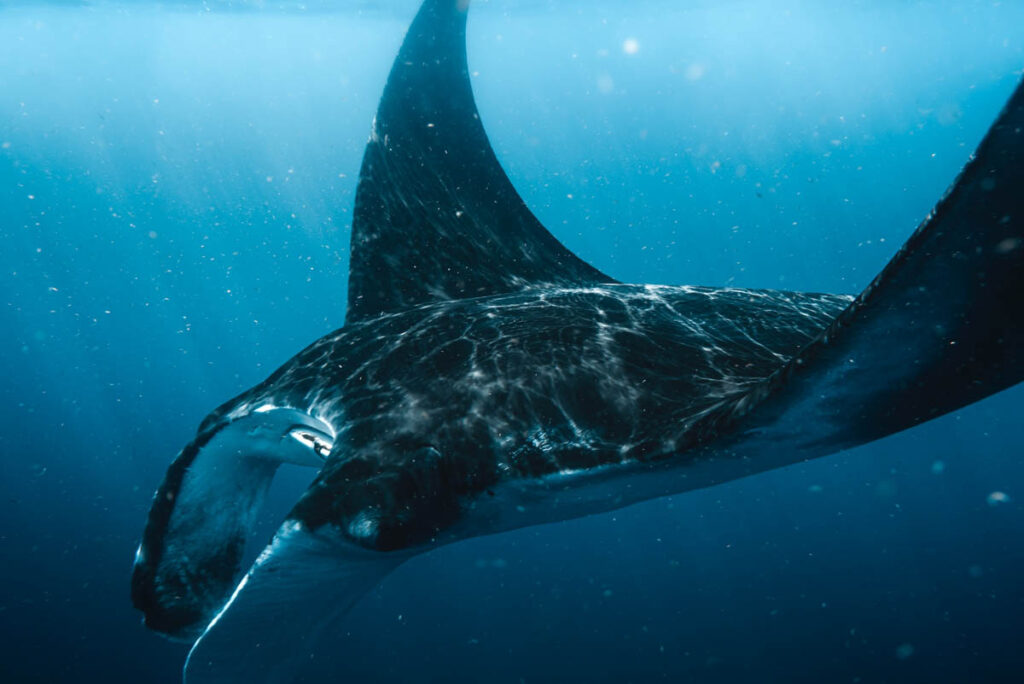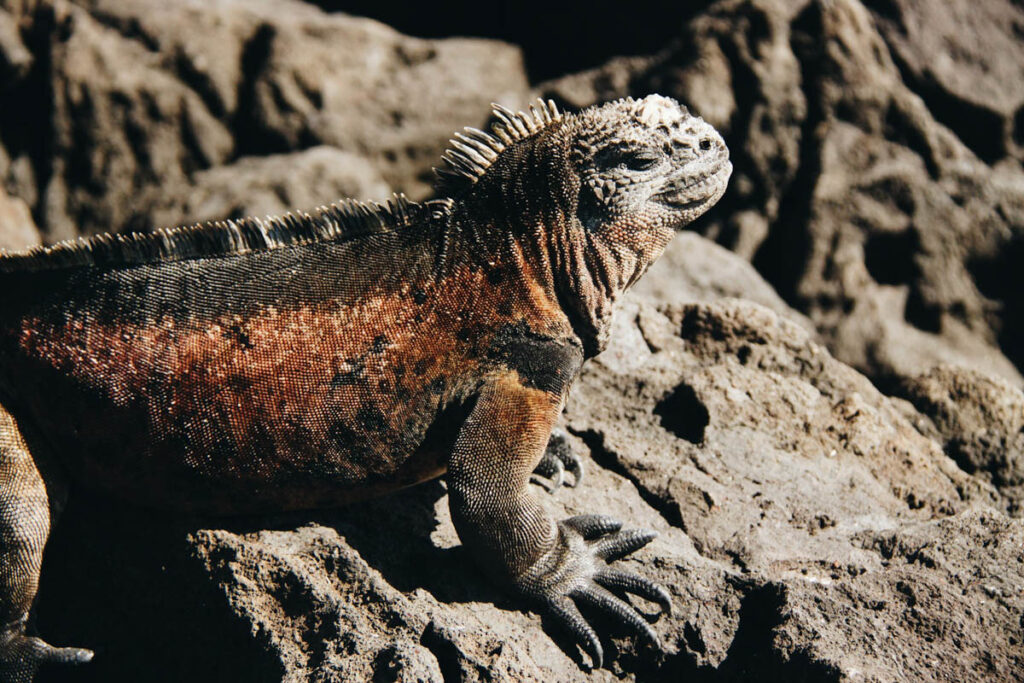Diving with big marine animals is one of the most memorable experiences a scuba diver can have. From whale sharks and manta rays to hunting orcas and breaching humpbacks, encounters with these incredible creatures are on many diving wish lists. Here’s a guide to some of the best destinations worldwide for big animal diving, with tips on what you’ll see and when to visit.
1. Galápagos Islands, Ecuador
The Galápagos Islands is a bucket-list dive destination with some of the most impressive wildlife on the planet. Known for its remote location and abundance of marine life, the Galápagos appeals to experienced divers looking to swim alongside some of the ocean’s most iconic animals. The region’s nutrient-rich waters support an incredible variety of marine life, including a variety of sharks, rays, marine iguanas, and sea lions. Schools of fish in the thousands make every dive feel like a scene from a nature documentary.
- Experience level needed: Ideally 50-100 logged dives, due to strong currents and challenging conditions.
- Best time to dive there: June to November for whale sharks; December to May for calmer seas.
- Average water temperature: 18–26°C (64–79°F), visibility 10–30m (33–98ft).
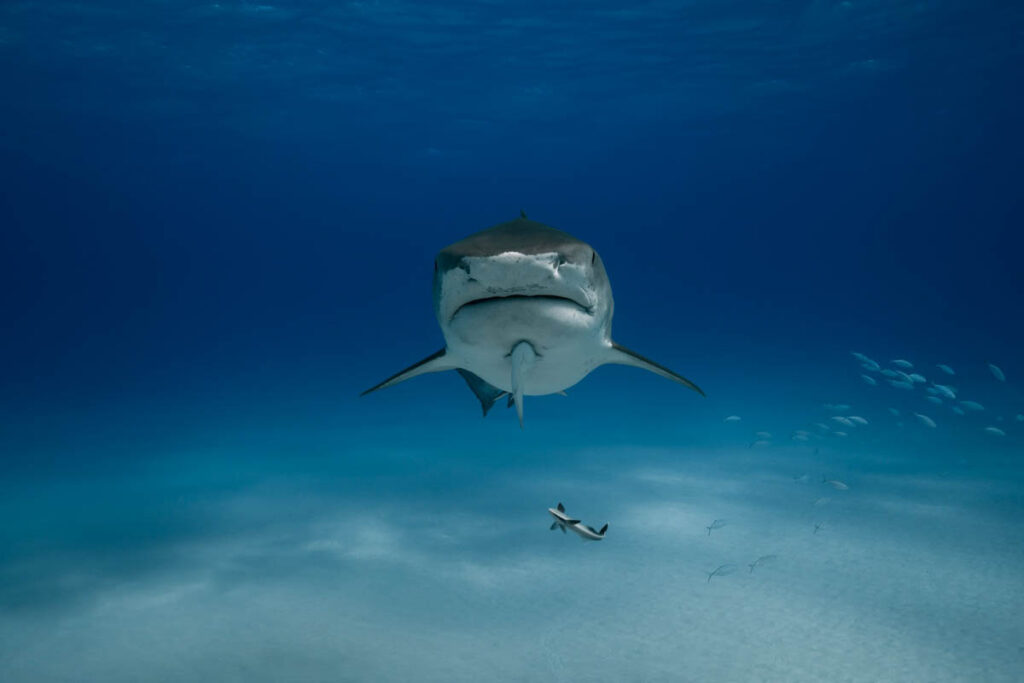
2. Tiger Beach, Bahamas
Tiger Beach in the Bahamas is one of the most accessible and famous destinations for shark diving. This shallow sandbank is ideal for every diver, including those who have a diving license but not many logged dives under their belt. It is also a superb dive site for photographers looking for up-close encounters with tiger sharks in crystal-clear waters.
Expect intimate encounters with tiger sharks, lemon sharks, and nurse sharks as they gracefully swim through the clear Bahamian waters. Dive operators here are experts at creating safe, controlled conditions for divers while respecting the sharks’ natural behaviors.
- Experience level needed: Open Water Diver.
- Best time to dive there: October to January for peak shark activity.
- Average water temperature: 24–28°C (75–82°F), visibility 15–30m (49–98ft).
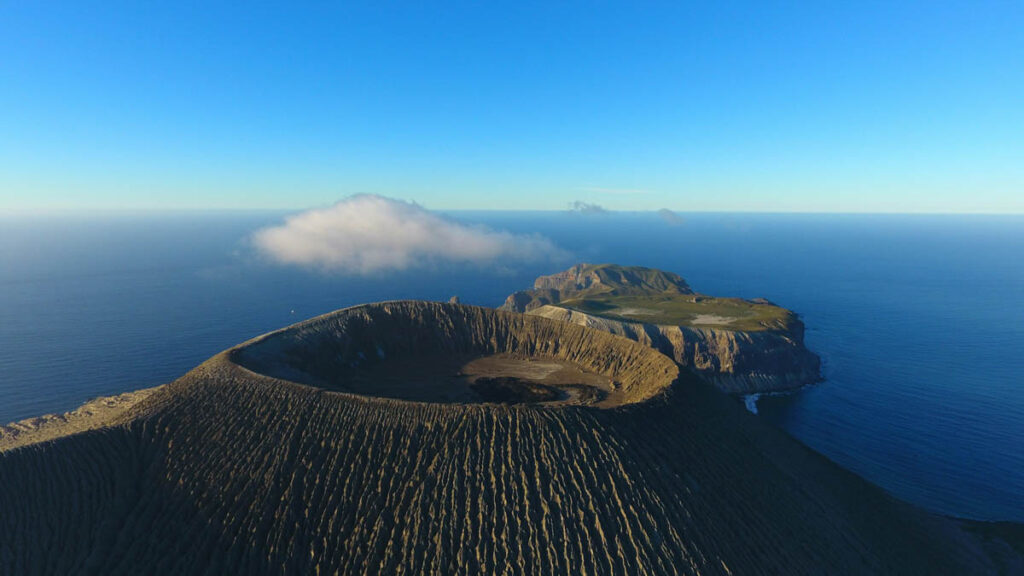
Photo by Swanson Chan on Unsplash
3. Socorro Islands, Mexico
Known as the “Mexican Galápagos,” the Socorro Islands are a paradise for divers seeking encounters with giant oceanic manta rays and large marine predators. These remote volcanic islands appeal to adventurous divers who enjoy remote liveaboard experiences.
The dive sites are busy with huge manta rays, dolphins, and several species of sharks, including hammerheads, silky sharks, and whale sharks. Humpback whales also visit these waters from January to April.
- Experience level needed: Ideally, 50 logged dives and excellent diving buoyancy control to manage the swell, surge, and open-ocean diving.
- Best time to dive there: November to May.
- Average water temperature: 21–28°C (70–82°F), visibility 10–25m (33–82ft).
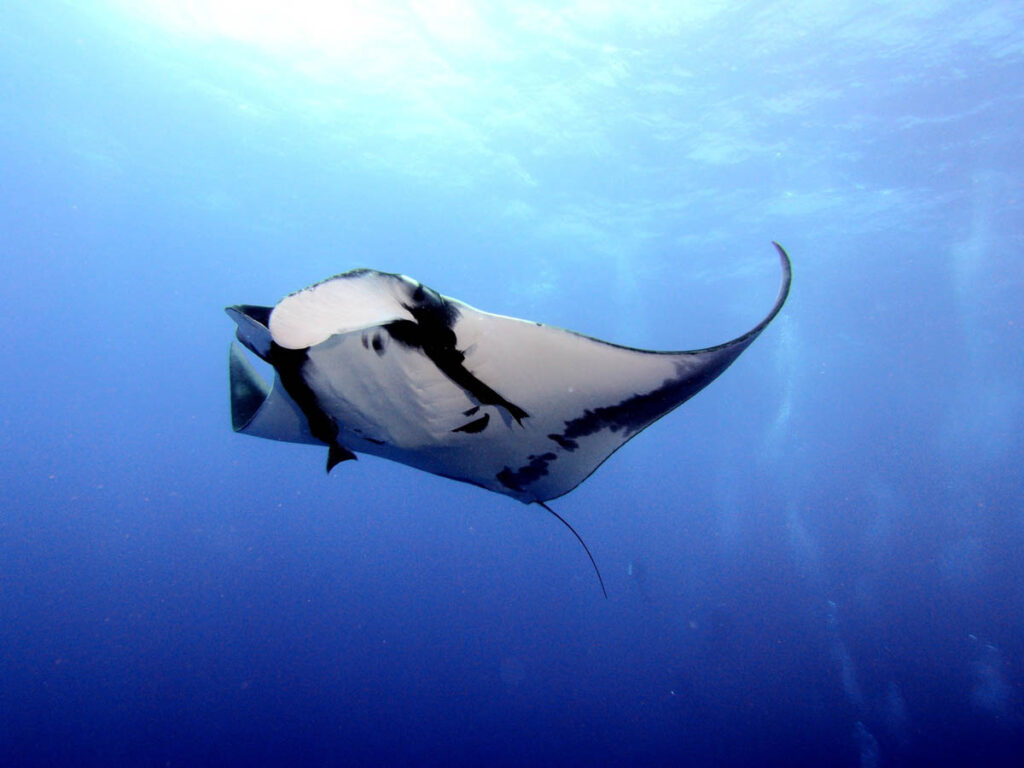
4. Cocos Island, Costa Rica
Cocos Island, a UNESCO World Heritage Site, is a bucket-list destination for divers seeking adrenaline-pumping pelagic encounters. Located 550km (342 miles) off the coast of Costa Rica, this remote island can only be accessed by liveaboard.
Cocos is famous for its massive schools of scalloped hammerhead sharks, which gather in the hundreds. You’ll also see silky sharks, tiger sharks, and giant manta rays. Whale shark sightings are common from June to November, and the dive sites are often filled with swirling schools of jacks and barracuda.
- Experience level needed: Advanced Open Water, preferably with 50 logged dives.
- Best time to dive there: June to November for hammerheads; December to May for calmer seas and manta rays.
- Average water temperature: 23–29°C (73–84°F), visibility 10–30m (33–98ft).
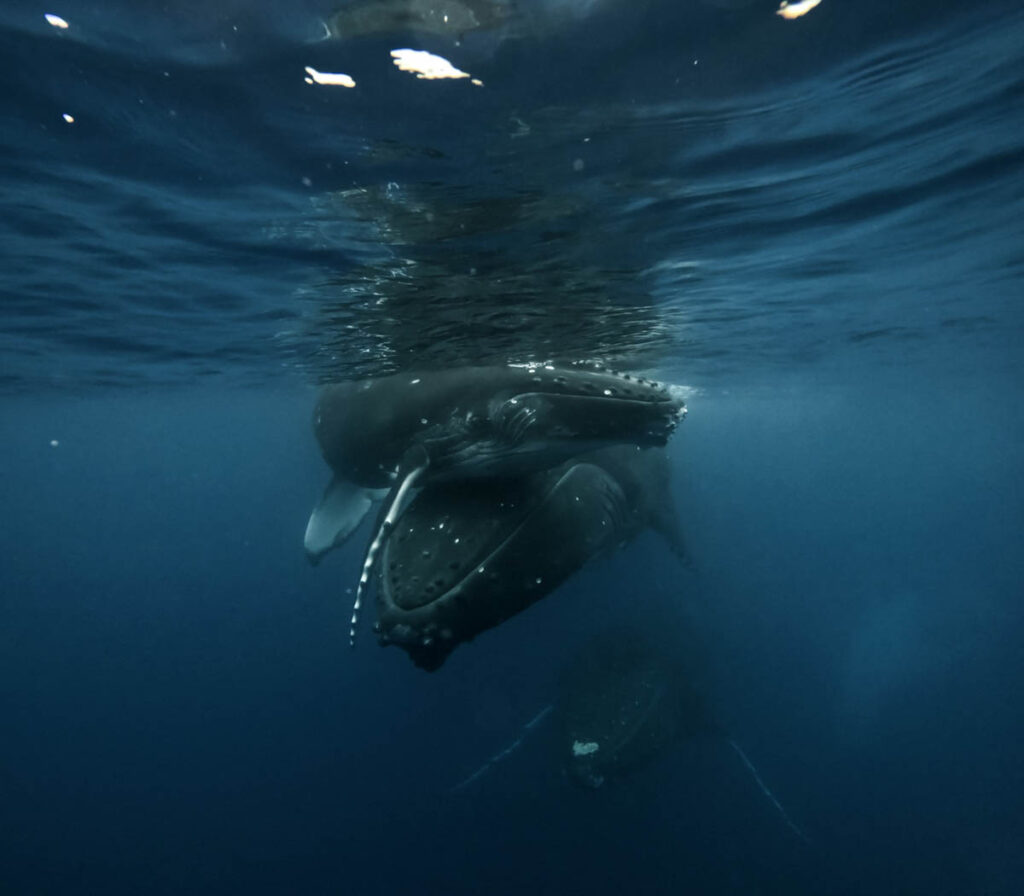
5. Silver Bank, Dominican Republic
Silver Bank is a unique destination for snorkelers who want to swim with humpback whales. This marine sanctuary is a haven for the North Atlantic humpback whale population, hosting thousands of these whales every year.
Humpback whales dominate the scene here. You can expect to snorkel alongside mothers and calves and watch the males’ impressive behavioral displays. While scuba diving is limited to protect the whales, snorkeling provides more than enough opportunity for incredible encounters.
- Experience level needed: Snorkelers.
- Best time to dive there: January to April during the humpback migration.
- Average water temperature: 26–28°C (79–82°F), visibility 15–30m (49–98ft).
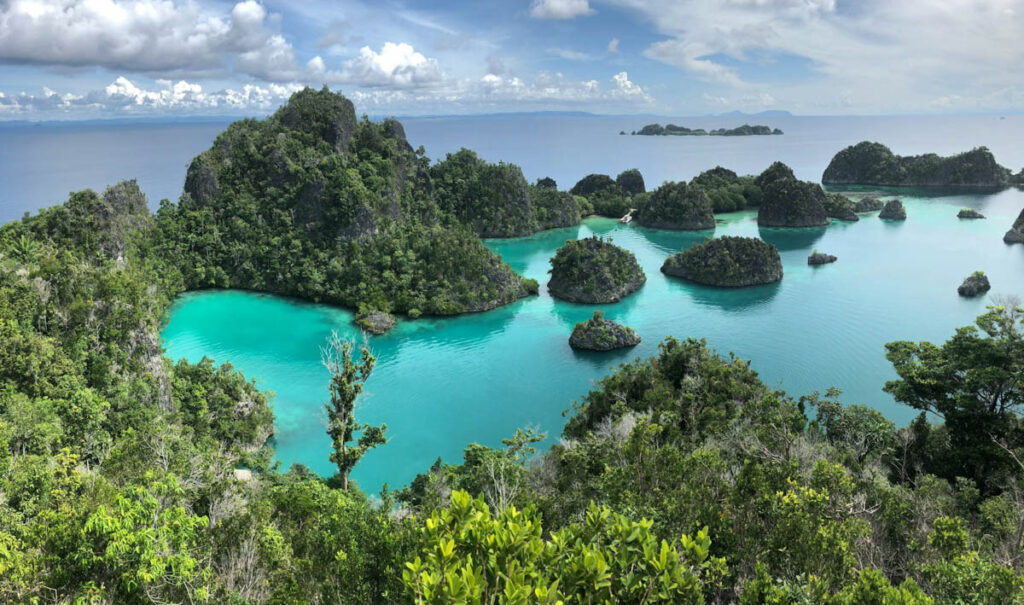
Photo by Bart ter Haar on Unsplash
6. Raja Ampat, Indonesia
Diving in Raja Ampat is known for its vibrant soft coral reefs and biodiversity, but it’s also home to some of the most magical big animal encounters in the Indo-Pacific. At dive sites like Blue Magic and Cape Kri, you’ll find manta rays gliding above the reef. Reef sharks, wobbegongs, and schools of barracuda are common sights. The nutrient-rich waters occasionally attract whale sharks but the best place to encounter them is at nearby Cenderawasih Bay.
- Experience level needed: Advanced Open Water, but some sites require more experience due to the strong currents.
- Best time to dive there: October to April for manta rays.
- Average water temperature: 27–30°C (81–86°F), visibility 10–30m (33–98ft).
7. Mozambique Channel, Mozambique
The Mozambique Channel is a lesser-known gem for divers looking for encounters with megafauna. The warm waters and healthy reefs attract a variety of large marine species. The region is famous for encounters with whale sharks and manta rays, particularly around Tofo Beach. Humpback whales migrate through these waters from June to October, and pods of dolphins are a frequent sight.
- Experience level needed: All experience levels.
- Best time to dive there: October to March for whale sharks; June to October for humpbacks.
- Average water temperature: 24–29°C (75–84°F), visibility 10–30m (33–98ft).
8. Aliwal Shoal and Protea Banks, South Africa
South Africa’s east coast offers exciting big animal diving. Aliwal Shoal and Protea Banks are hotspots for shark encounters and other pelagic life. Aliwal Shoal is known for its population of ragged-tooth sharks, and you can also snorkel with oceanic blacktip sharks there – which is a phenomenal experience. Protea Banks attracts bull sharks, tiger sharks, and both scalloped and great hammerheads.
- Experience level needed: Advanced Open Water and comfortable with currents and deep dives.
- Best time to dive there: Year-round for sharks.
- Average water temperature: 20–25°C (68–77°F), visibility 10–40m (33–131ft).
9. Palau, Micronesia
Diving in Palau is famous for its stunning tropical islands, pristine dive sites, and pelagic life. This destination is perfect for divers who want to combine big animal encounters with stunning underwater landscapes. The Blue Corner is the star attraction, where strong currents bring numerous sharks and huge schools of jacks and barracuda. Manta rays frequent sites like the German Channel. Sea turtles, eagle rays, and Napoleon wrasse are also common sightings at this stunning destination.
- Experience level needed: Advanced Open Water due to strong currents.
- Best time to dive there: November to April for the dry season.
- Average water temperature: 27–30°C (81–86°F), visibility 20–40m (66–131ft).
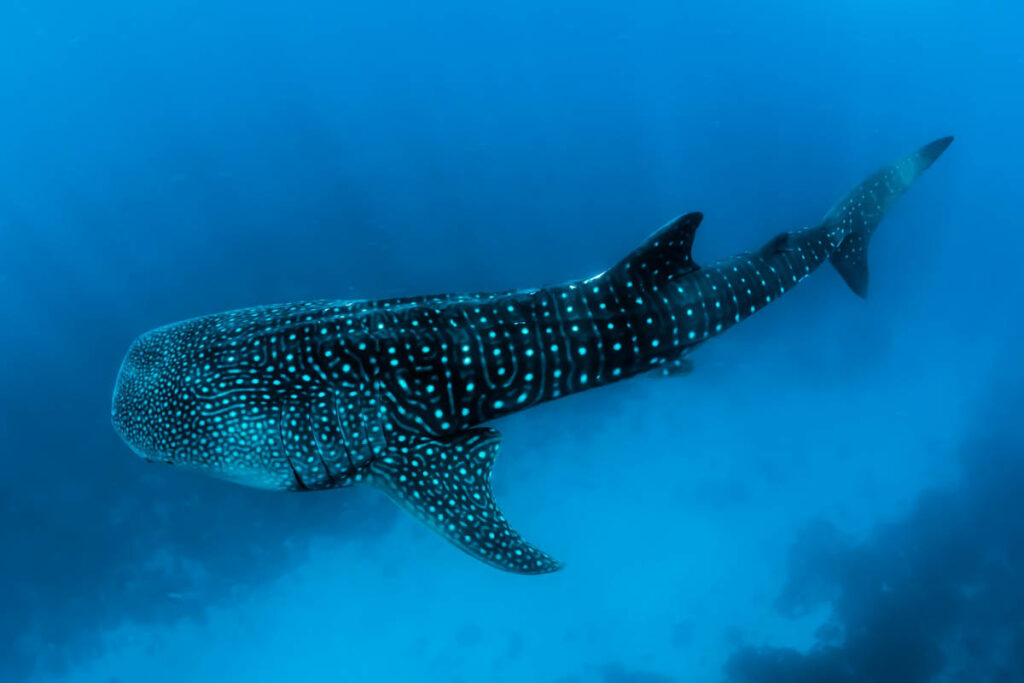
10. Ningaloo Reef, Australia
Located in Western Australia, Ningaloo Reef is a UNESCO World Heritage Site and one of the best places in the world to swim with whale sharks. Whale sharks are the main draw, but manta rays, dugongs, and humpback whales also pass through these waters. Coral Bay and Exmouth are excellent bases for exploring this pristine reef.
- Experience level needed: Snorkelers.
- Best time to dive there: March to July for whale sharks; June to November for humpback whales.
- Average water temperature: 22–28°C (72–82°F), visibility 10–30m (33–98ft).
11. Hanifaru Bay, Maldives
Hanifaru Bay in the Maldives is a world-famous spot for mass manta ray gatherings. It’s a dream destination and a unique place to snorkel with cyclone-feeding manta rays. During the plankton bloom, hundreds of manta rays gather to feed in this bay. These graceful rays spiral as they feed, creating a breathtaking display that is a bucket-list experience for manta fans.
- Experience level needed: Snorkelers.
- Best time to dive there: May to November.
- Average water temperature: 27–30°C (81–86°F), visibility 10–25m (33–82ft).
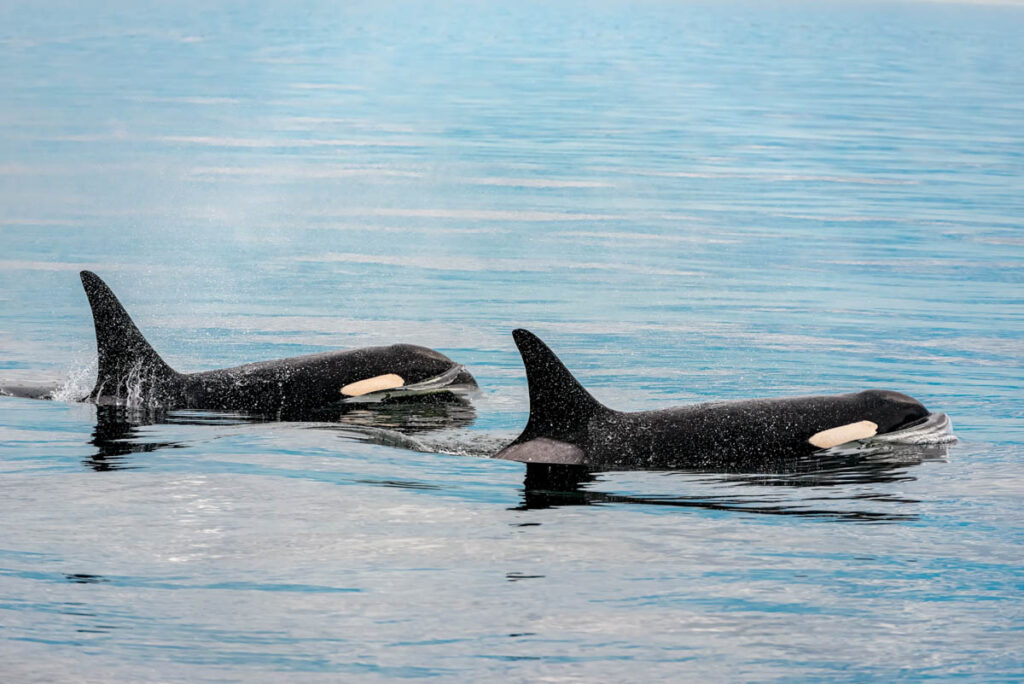
12. Tromsø, Norway
Tromsø in northern Norway offers a unique opportunity to snorkel with orcas as they hunt herring in the fjords. This cold-water adventure is perfect for those seeking a truly wild encounter. Orcas are the main attraction here, but humpback whales are also part of the spectacle.
Snorkeling among these predators in the Arctic winter is an unforgettable experience. You are surrounded by snow-capped, remote landscapes and have a good chance of seeing the Northern Lights at night. It is a once-in-a-lifetime trip to add to your wish list if you don’t mind the cold.
- Experience level needed: Snorkeling; cold-water experience is helpful.
- Best time to dive there: November to January.
- Average water temperature: 2-6°C (36-43°F), visibility 5–15m (16–49ft).
13. Tonga
Tonga’s warm waters are a calving ground for humpback whales, making it a top destination for snorkelers and freedivers seeking close encounters with these gentle giants. You’ll swim alongside mothers and calves in calm, clear waters, with opportunities to hear their songs and watch their playful behaviors.
- Experience level needed: Snorkelers and Freedivers.
- Best time to dive there: July to October.
- Average water temperature: 23–27°C (73–81°F), visibility 15–30m (49–98ft).
14. San Ignacio Lagoon, Mexico
San Ignacio Lagoon, located on Mexico’s Baja California Peninsula, is a world-renowned destination for intimate encounters with gray whales. Each winter, these gentle giants migrate to the lagoon’s warm, shallow waters to breed and give birth. This calm and protected environment offers a rare opportunity to interact with gray whales, known for their curiosity and for sometimes approaching boats to be gently petted.
- Experience level needed: None. This is a boat-based experience only.
- Best time to dive there: January to April during the gray whale migration.
- Average water temperature: N/A.
15. Magdalena Bay, Mexico
Magdalena Bay, located along Baja California Sur’s Pacific coast, is a prime location for witnessing Mexico’s sardine run. From October to December, massive schools of sardines migrate through the bay’s nutrient-rich waters, attracting a variety of marine predators. Marlin, dorado, dolphins, whales, sea lions, and sharks create a mesmerizing spectacle as they hunt the bait balls. Above the water, seabirds dive into the fray, completing the dynamic scene.
- Experience level needed: Snorkelers and freedivers comfortable in open-ocean, dynamic environments.
- Best time to dive there: October to December.
- Average water temperature: 22–25°C (72–77°F), visibility 10–20m (33–66ft).



